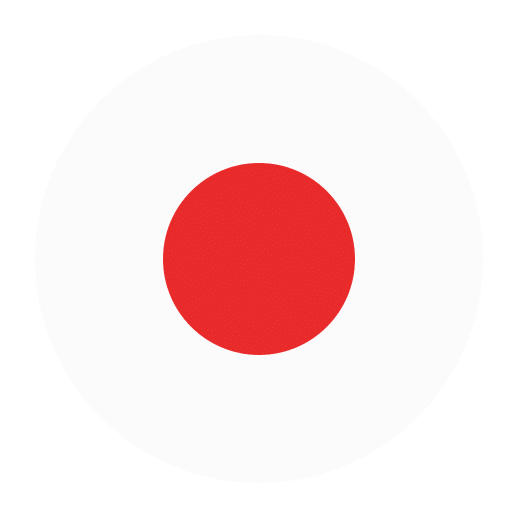Learning a new language can often feel like a daunting task, but one of the best ways to ease into it is by starting with everyday vocabulary. Familiarizing yourself with common household items is a practical and effective way to begin expanding your Japanese language skills. Not only will this help you feel more at home when using the language, but it will also make it easier to communicate about everyday topics. In this article, we will go over some of the most common household items in Japanese, along with their pronunciations and usage in sentences.
Living Room Essentials
The living room is often the heart of a home, where family members gather to relax and spend time together. Here are some common items you might find in a Japanese living room:
– **Sofa** – ソファ (sofā)
– Example: ソファでテレビを見ます。 (Sofā de terebi o mimasu.) – “I watch TV on the sofa.”
– **Television** – テレビ (terebi)
– Example: 新しいテレビを買いました。 (Atarashii terebi o kaimashita.) – “I bought a new television.”
– **Table** – テーブル (tēburu)
– Example: テーブルの上に雑誌があります。 (Tēburu no ue ni zasshi ga arimasu.) – “There is a magazine on the table.”
– **Chair** – 椅子 (isu)
– Example: 椅子に座ってください。 (Isu ni suwatte kudasai.) – “Please sit on the chair.”
– **Bookshelf** – 本棚 (hondana)
– Example: 本棚にたくさんの本があります。 (Hondana ni takusan no hon ga arimasu.) – “There are many books on the bookshelf.”
– **Curtain** – カーテン (kāten)
– Example: カーテンを閉めてください。 (Kāten o shimete kudasai.) – “Please close the curtains.”
Kitchen and Dining Area
The kitchen is another essential part of the home, filled with items that you use on a daily basis. Here are some key items you might find in a Japanese kitchen and dining area:
– **Refrigerator** – 冷蔵庫 (reizouko)
– Example: 冷蔵庫に牛乳があります。 (Reizouko ni gyuunyuu ga arimasu.) – “There is milk in the refrigerator.”
– **Stove** – ストーブ (sutōbu) or コンロ (konro)
– Example: ストーブで料理をします。 (Sutōbu de ryouri o shimasu.) – “I cook on the stove.”
– **Microwave** – 電子レンジ (denshi renji)
– Example: 電子レンジでご飯を温めます。 (Denshi renji de gohan o atatamemasu.) – “I heat up the food in the microwave.”
– **Sink** – 流し (nagashi)
– Example: 流しで皿を洗います。 (Nagashi de sara o araimasu.) – “I wash the dishes in the sink.”
– **Dining Table** – ダイニングテーブル (dainingu tēburu)
– Example: ダイニングテーブルで食事をします。 (Dainingu tēburu de shokuji o shimasu.) – “We eat at the dining table.”
– **Fork** – フォーク (fōku)
– Example: フォークを使って食べます。 (Fōku o tsukatte tabemasu.) – “I eat using a fork.”
– **Spoon** – スプーン (supūn)
– Example: スプーンでスープを飲みます。 (Supūn de sūpu o nomimasu.) – “I drink soup with a spoon.”
– **Knife** – ナイフ (naifu)
– Example: ナイフで肉を切ります。 (Naifu de niku o kirimasu.) – “I cut the meat with a knife.”
– **Plate** – 皿 (sara)
– Example: 皿を片付けます。 (Sara o katazukemasu.) – “I clean up the plates.”
Bedroom Items
The bedroom is your personal sanctuary, a place to rest and relax. Learning the names of common bedroom items can help you feel more comfortable and familiar with the language:
– **Bed** – ベッド (beddo)
– Example: ベッドで寝ます。 (Beddo de nemasu.) – “I sleep in the bed.”
– **Pillow** – 枕 (makura)
– Example: 枕が柔らかいです。 (Makura ga yawarakai desu.) – “The pillow is soft.”
– **Blanket** – 毛布 (moufu)
– Example: 毛布を掛けます。 (Moufu o kakemasu.) – “I put on a blanket.”
– **Wardrobe** – 洋服ダンス (youfuku dansu)
– Example: 洋服ダンスに服をしまいます。 (Youfuku dansu ni fuku o shimaimasu.) – “I put clothes in the wardrobe.”
– **Alarm Clock** – 目覚まし時計 (mezamashidokei)
– Example: 目覚まし時計をセットします。 (Mezamashidokei o setto shimasu.) – “I set the alarm clock.”
Bathroom Items
The bathroom is another essential part of any home. Here are some common items you might find in a Japanese bathroom:
– **Toilet** – トイレ (toire)
– Example: トイレを使います。 (Toire o tsukaimasu.) – “I use the toilet.”
– **Bathtub** – 浴槽 (yokusou)
– Example: 浴槽にお湯を入れます。 (Yokusou ni oyu o iremasu.) – “I fill the bathtub with hot water.”
– **Shower** – シャワー (shawā)
– Example: シャワーを浴びます。 (Shawā o abimasu.) – “I take a shower.”
– **Sink** – 洗面台 (senmendai)
– Example: 洗面台で手を洗います。 (Senmendai de te o araimasu.) – “I wash my hands at the sink.”
– **Mirror** – 鏡 (kagami)
– Example: 鏡で顔を見ます。 (Kagami de kao o mimasu.) – “I look at my face in the mirror.”
Miscellaneous Household Items
Finally, here are some miscellaneous household items that you may encounter in various parts of the house:
– **Lamp** – ランプ (ranpu)
– Example: ランプを点けます。 (Ranpu o tsukemasu.) – “I turn on the lamp.”
– **Clock** – 時計 (tokei)
– Example: 時計を見ます。 (Tokei o mimasu.) – “I look at the clock.”
– **Vacuum Cleaner** – 掃除機 (soujiki)
– Example: 掃除機で部屋を掃除します。 (Soujiki de heya o souji shimasu.) – “I clean the room with a vacuum cleaner.”
– **Fan** – 扇風機 (senpuuki)
– Example: 扇風機を使います。 (Senpuuki o tsukaimasu.) – “I use the fan.”
– **Air Conditioner** – エアコン (eakon)
– Example: エアコンを点けます。 (Eakon o tsukemasu.) – “I turn on the air conditioner.”
– **Remote Control** – リモコン (rimokon)
– Example: リモコンでテレビを操作します。 (Rimokon de terebi o sousa shimasu.) – “I control the TV with the remote control.”
Conclusion
Learning the names of common household items in Japanese is a great way to build your vocabulary and feel more comfortable using the language in everyday situations. By familiarizing yourself with these terms, you’ll be better equipped to describe your surroundings and daily activities. Remember to practice using these words in sentences to help reinforce your memory and improve your speaking skills. Happy learning!

